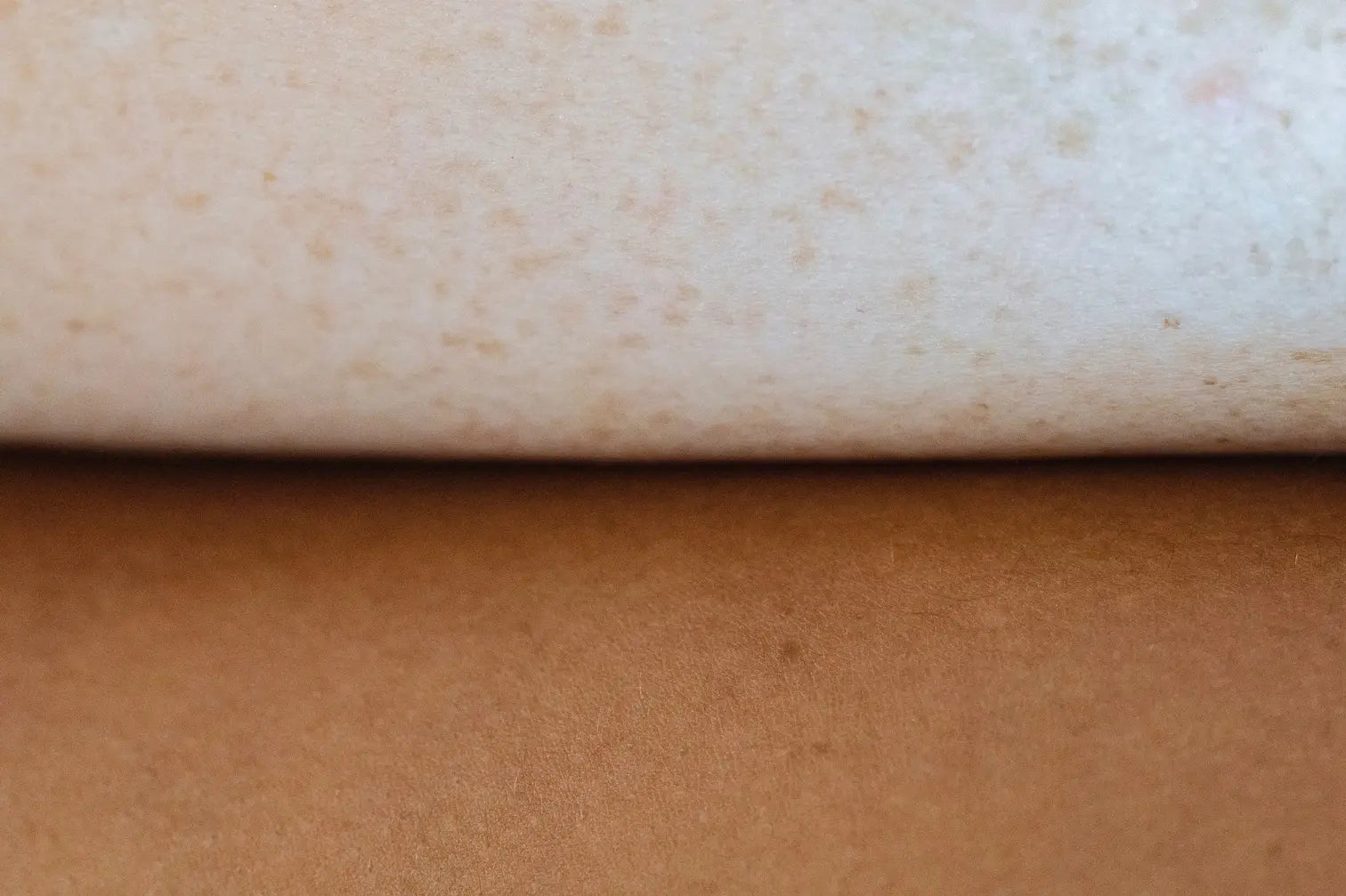Are skin type and texture interchangeable terms?
- Normal: This skin type is neither too oily nor too dry.
- Oily: This skin type produces excess oil, otherwise known as sebum.
- Dry: This skin type does not produce enough oil, leading to flaky skin.
- Combination: This skin type has excess oil in certain regions but dryness elsewhere.
- Sensitive: This skin type is reactive and easily irritated by the environment and certain products/ingredients. [1]
Are skin type and texture interchangeable terms?
- Normal: This skin type is neither too oily nor too dry.
- Oily: This skin type produces excess oil, otherwise known as sebum.
- Dry: This skin type does not produce enough oil, leading to flaky skin.
- Combination: This skin type has excess oil in certain regions but dryness elsewhere.
- Sensitive: This skin type is reactive and easily irritated by the environment and certain products/ingredients. [1]
What are the different types of skin textures?
What are the different types of skin textures?
How do I know what texture my skin is?
How do I know what texture my skin is?
What does texture on the skin look like?
What does texture on the skin look like?
How do I know if I have textured skin?
How do I know if I have textured skin?
Is skin texture normal?
Is skin texture normal?
Why does skin become textured?
Why does skin become textured?
What is normal skin texture?
What is normal skin texture?
How can you determine what is contributing to your skin texture?
How can you determine what is contributing to your skin texture?
Does diet play a role in the formation of textured skin?
- Fresh fruits and vegetables
- Wild-caught fatty fish
- Nuts and seeds [10]
Does diet play a role in the formation of textured skin?
- Fresh fruits and vegetables
- Wild-caught fatty fish
- Nuts and seeds [10]
Can topical application improve skin texture?
Can topical application improve skin texture?
- Skin type and skin texture are related but not the same. While skin type is focused on oil production, skin texture is more focused on the appearance of the skin, and how it feels to the touch.
- Inconsistent and rough skin textures are usually a result of skin conditions such as acne, rosacea, and eczema.
- Some skin textures include rough patches, enlarged pores, wrinkling, acne, and acne scarring.
- Age-related and menopause-associated declines in collagen can also lead to wrinkling and enlarged pores. Sun damage from UV radiation can accelerate skin aging and worsen skin texture irregularities. Lack of exfoliation and accumulation of dead skin cells can also make the skin look more textured and rough.
- Topical application of sunscreens, moisturizers, and use of gentle exfoliants can all improve skin texture!
- OneSkin's Topical Supplements are clinically validated to improve barrier function, hydration, and skin texture. [4, 6]
- Skin type and skin texture are related but not the same. While skin type is focused on oil production, skin texture is more focused on the appearance of the skin, and how it feels to the touch.
- Inconsistent and rough skin textures are usually a result of skin conditions such as acne, rosacea, and eczema.
- Some skin textures include rough patches, enlarged pores, wrinkling, acne, and acne scarring.
- Age-related and menopause-associated declines in collagen can also lead to wrinkling and enlarged pores. Sun damage from UV radiation can accelerate skin aging and worsen skin texture irregularities. Lack of exfoliation and accumulation of dead skin cells can also make the skin look more textured and rough.
- Topical application of sunscreens, moisturizers, and use of gentle exfoliants can all improve skin texture!
- OneSkin's Topical Supplements are clinically validated to improve barrier function, hydration, and skin texture. [4, 6]
- https://www.medicalnewstoday.com/articles/what-type-of-skin-do-i-have#skin-types
- https://blog.glowrecipe.com/the-different-types-of-skin-texture/
- https://www.oneskin.co/blogs/reference-lab/why-skin-barrier-is-important
- Based on data from clinical studies and/or lab studies conducted on human skin samples, 3D skin models, and skin cells in the OneSkin lab. Explore more at oneskin.co/claims
- https://www.nature.com/articles/s41514-023-00109-1
- https://onlinelibrary.wiley.com/doi/epdf/10.1111/jocd.16242
- https://my.clevelandclinic.org/health/diseases/12233-acne
- https://www.verywellhealth.com/can-i-close-my-large-pores-15486
- https://www.oneskin.co/blogs/reference-lab/the-top-3-benefits-of-peptides-for-skin
- https://fountaingrovemedspa.com/how-diet-affects-your-skin-health/
- https://www.medicalnewstoday.com/articles/what-type-of-skin-do-i-have#skin-types
- https://blog.glowrecipe.com/the-different-types-of-skin-texture/
- https://www.oneskin.co/blogs/reference-lab/why-skin-barrier-is-important
- Based on data from clinical studies and/or lab studies conducted on human skin samples, 3D skin models, and skin cells in the OneSkin lab. Explore more at oneskin.co/claims
- https://www.nature.com/articles/s41514-023-00109-1
- https://onlinelibrary.wiley.com/doi/epdf/10.1111/jocd.16242
- https://my.clevelandclinic.org/health/diseases/12233-acne
- https://www.verywellhealth.com/can-i-close-my-large-pores-15486
- https://www.oneskin.co/blogs/reference-lab/the-top-3-benefits-of-peptides-for-skin
- https://fountaingrovemedspa.com/how-diet-affects-your-skin-health/



